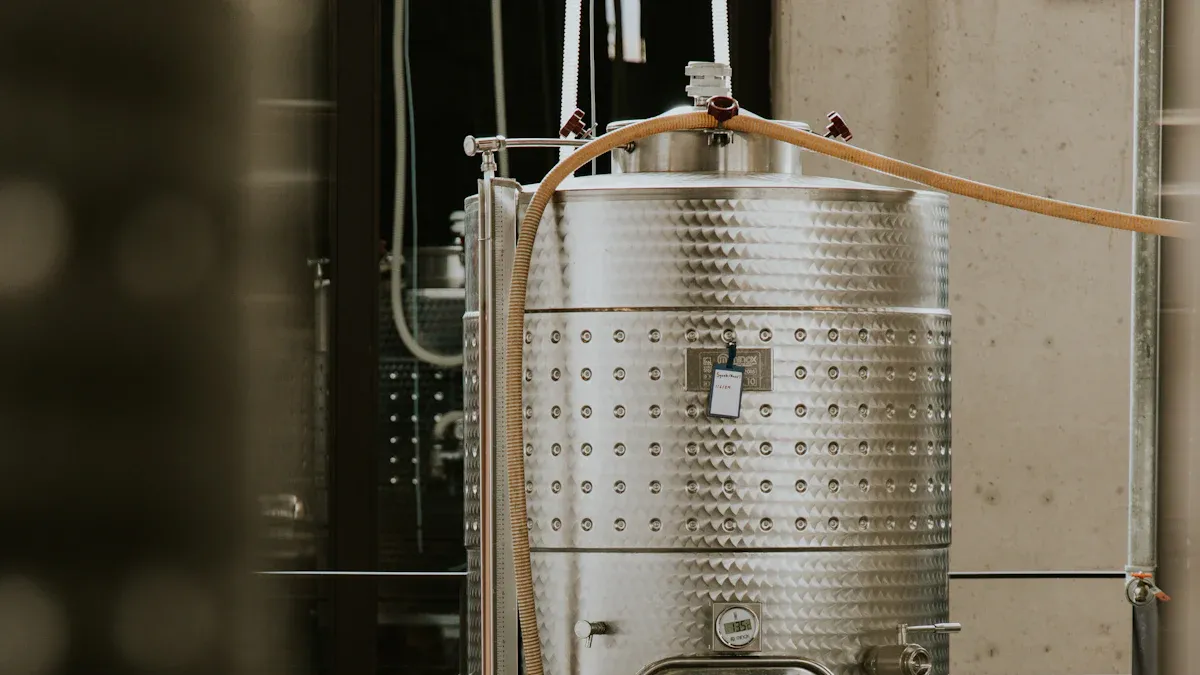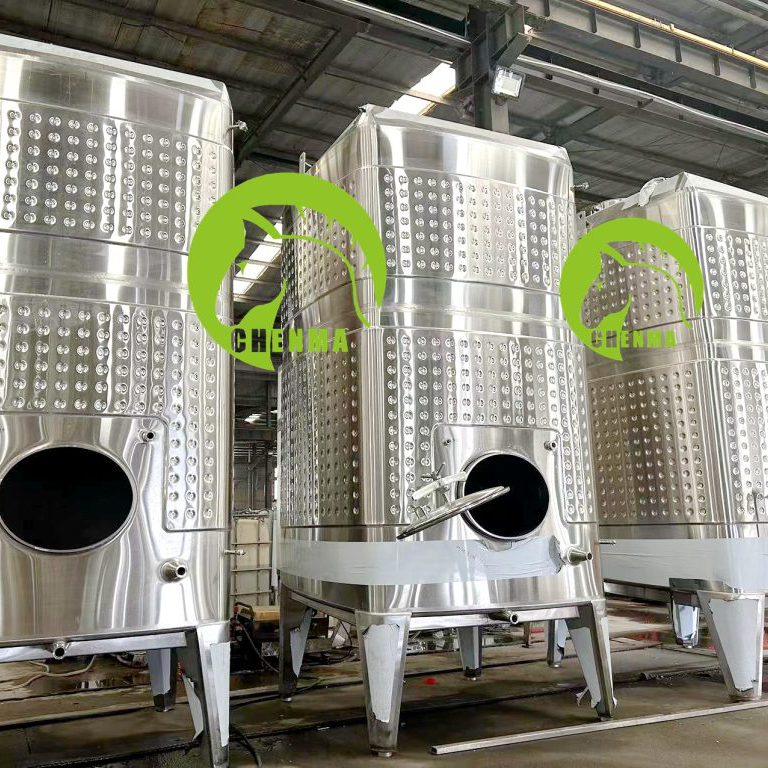
To run a successful cider brewery, it’s essential to invest in high-quality cider making equipment that can help ensure the consistency and quality of your cider production. Here are some key pieces of equipment to consider:
1.Fermentation Tanks: Stainless steel fermentation tanks are a cornerstone of cider production. Choose tanks with appropriate capacities for your production volume, and consider conical tanks that make yeast management and sediment removal easier. Ensure they have cooling jackets or temperature control systems for precise fermentation temperature regulation.
2.Apple Mill or Crusher: A high-quality apple mill or crusher is essential for crushing apples into a fine pulp. The consistency of the pulp affects juice extraction efficiency. Look for machines with durable blades and easy cleaning features.
3.Press: A cider press is used to extract juice from the crushed apples. There are various types, including hydraulic presses and bladder presses. Hydraulic presses are known for their efficiency, while bladder presses are gentle on the juice. Choose one that suits your production scale and style.
4.Pumps and Transfer Equipment: Efficient pumps and transfer equipment are crucial for moving juice and cider between tanks, barrels, and packaging. Look for pumps that are easy to clean and sanitize.
5.Tanks for Juice and Cider Storage: In addition to fermentation tanks, you’ll need tanks for storing juice, cider, and possibly aging your product. Ensure these tanks are made from stainless steel and have proper seals to prevent oxidation.
6.Temperature Control Equipment: Maintain precise temperature control throughout the cider-making process with cooling jackets, glycol chiller systems, or temperature-controlled rooms. Proper temperature control is essential for flavor development and yeast management.
7.Yeast and Additive Management: Invest in equipment for handling yeast and additives accurately. This may include yeast propagation systems, dosing equipment, and mixing tanks.
8.Bottling and Packaging Equipment: Consider efficient bottling and packaging equipment, such as bottle fillers, capping machines, labelers, and kegging systems. These should be designed to minimize oxygen exposure and ensure consistent product quality.
9.Filtration and Clarification: Filtration equipment like plate and frame filters or crossflow filters can help clarify cider, removing unwanted solids and yeast. Properly clarified cider improves product stability and appearance.
10.Quality Control Tools: Invest in laboratory equipment for quality control, including pH meters, hydrometers, and spectrophotometers. Regular testing helps ensure product consistency.
11.Cleaning and Sanitization Equipment: Effective cleaning and sanitation are critical in cider production. Invest in cleaning systems, tanks, and sanitation equipment designed for the beverage industry.
12.Barrels and Aging Equipment: If you plan to age cider, oak barrels or stainless steel aging tanks are essential. Barrels impart unique flavors to cider, while stainless steel tanks offer a more neutral aging environment.
13.Safety and Compliance Equipment: Ensure you have safety equipment, such as pressure relief valves on tanks, and adhere to regulatory standards for labeling, safety, and hygiene.
14.Customization: Depending on your cider style, consider customization options like blending tanks for creating unique flavors, filtration systems tailored to your needs, or specialized equipment for sparkling cider production.
When choosing cider making equipment, research reputable manufacturers, seek recommendations from industry peers, and consider factors like warranty, customer support, and equipment maintenance requirements. Investing in high-quality cider making equipment will set the foundation for a successful and consistent cider brewery.



